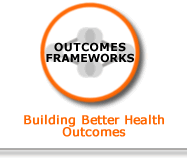| |
Impact on outcomes
Sources
Impact on short term and intermediate outcomes
There is review level evidence and policy documents supporting:
- the effects of taxation (on smoking cessation and ultimately on smoking prevention in the longer-term [1], and on reducing tobacco consumption and prevalence among young people e.g. “The World Bank has calculated that a 10% increase in the price of cigarettes on average reduces demand by 4% in high-income countries such as the UK. The effect of a 10% price increase on the 77 billion cigarettes sold in the UK would be to reduce consumption by about 3 billion cigarettes per year.” [1,2]
- the strong evidence of the effects of taxation on young people [2] by reducing tobacco consumption [2] and prevalence [1] who may be up to 3-4 times more price sensitive than older adults [2] e.g. “A recent systematic review amongst 13 to 24 year olds also concluded that price affected both the number of young smokers and the amount of tobacco consumed.”) [1,2]
- However, “the evidence also suggests that cheaper smuggled tobacco products undermine the impact of pricing and sales control” [2] and “fiscal policies aimed at reducing tobacco consumption” [2] – “the implementation of such measures may be undermined by tax-evasion or tax-avoidance measures such as smuggling and cross-border shopping” but there is better evidence for its effect on inequalities than other measures such as health warnings and advertising restrictions[6,7]
- price and regulation policies among a comprehensive tobacco control strategy of measures [3] and the benefits of increasing taxing and the effects of increasing taxing among other measures to reduce youth’s ability to access tobacco [3,4,5]
- increasing the price of cigarettes due to the consistent evidence that it is more effective in reducing smoking in lower-income adults and among smokers in manual occupations and “the intervention for which there is the strongest evidence as a measure for reducing smoking-related inequalities in health” [6,7]
Similarly, review level evidence supports the greater or more immediate effect of price increases as intervention:
- in the context of broad, multi-faceted approaches and their potential for a synergistic effect, “some types of intervention will have a greater or more immediate effect than others (e.g. price increases compared with education)” [3]
Other papers examining tobacco industry documents have noted:
- depending on the size of the price increase, reduced consumption of tobacco products following increases in tobacco taxes can be quite substantial [8].
- excise taxes to have a significant effect on passive smoking [9]
- a consistent range of estimates of elasticity from different countries – an elasticity of -0.4 to -0.5 i.e. a 10% increase in prices gives a 4-5% reduction in demand (with differences between products and groups) [8] - and that “Future tobacco control efforts that aim to raise prices and limit price related marketing efforts are likely to be important in achieving reductions in tobacco use and the public health toll caused by tobacco” [10].” A more recent meta-analysis (2003) [11] , reviewing 86 studies, updates the above-cited World Bank review from 1999 and “found a mean price elasticity of –0.48, meaning that, on average, a 10% increase in price will be followed by a decrease in consumption of 4.8%. Subsequent research has found similar levels of elasticity” [8]
Source:
1. Scottish Executive (2006). Towards A Future Without Tobacco.Scottish Executive, Edinburgh.
2. Scottish Government (2008). Scotland’s Future is Smoke Free: A Smoking Prevention Action Plan. Scottish Government, Edinburgh.
3. NICE (2008). Public Health Guidance 14 – Preventing the uptake of smoking by children and young people: mass-media and point-of-sales measures to prevent the uptake of smoking by children and young people. NICE, London.
4. Raikou, M. and McGuire, A., on behalf of LSE Health, London School of Economics and Political Science (2008). Cost effectiveness of a mass media campaign and a point of sale intervention to prevent the uptake of smoking in children and young people: Economic Modelling Report. For National Institute for Health and Clinical Excellence (NICE): Public Health Intervention Guidance 14. NICE, London.
5. Raikou, M. and McGuire A., On behalf of LSE Health, London school of economics and political science (2007). A review of the cost-effectiveness of interventions (specifically point of sales measures and mass media) to prevent the uptake of smoking in young people under 18 years old. For National Institute for Health and Clinical Excellence (NICE): Public Health Intervention Guidance 14. NICE, London
6. Centre for Reviews and Dissemination. Population tobacco control interventions and their effects on social inequalities in smoking. CRD Report 39. York: University of York. 2008
7. Thomas T, Fayter D, Misso K et al. Population tobacco control interventions and their effects on social inequalities in smoking: systematic review. Tob Control 2008 17: 230-237.
back to top |



